Kingdom Bacteria Class Clostridia Family Peptococcaceae Rank Species | Phylum Firmicutes Order Clostridiales Scientific name Desulforudis audaxviator | |
 | ||
Genus Candidatus Desulforudis Similar Helaeomyia petrolei, Halicephalobus mephisto, Paralvinella sulfincola, Deinococcus, GFAJ‑1 | ||
Desulforudis audaxviator is a monotypic bacterium, which lives in depths from 1.5 km to 3 km (.9 to 1.8 miles) below the Earth's surface in the groundwater.
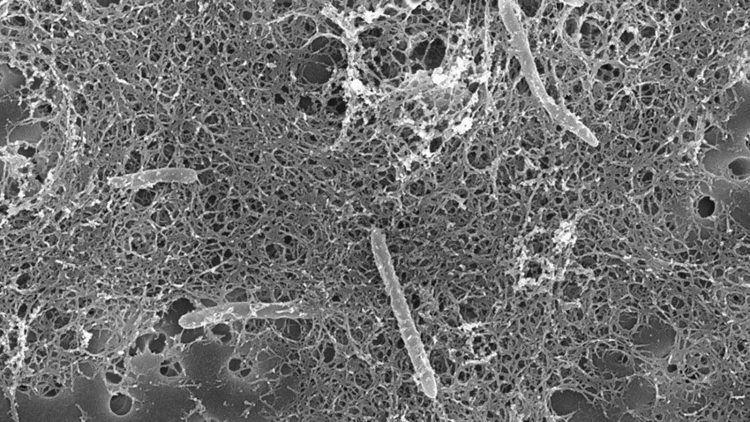
It is the only bacterium found in water samples obtained 2.8 km (1.7 miles) underground in the Mponeng gold mine in South Africa. Approximately four micrometres in length, it has survived for millions of years on chemical food sources that derive from the radioactive decay of minerals in the surrounding rock, making it one of the few organisms known that does not depend on sunlight for nourishment and the only species known to be alone in its ecosystem. D. audaxviator has genes for extracting carbon from dissolved carbon dioxide and for nitrogen fixation. It may also have acquired genes from a species of archaea by horizontal gene transfer.
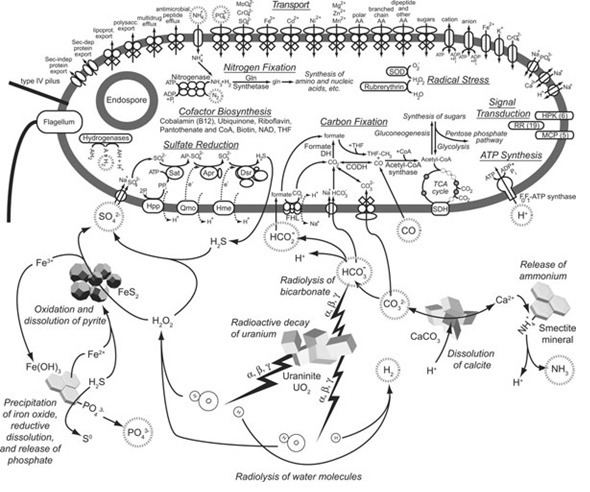
They have been isolated from Earth's surface for several million years because analyses of the water that they live in showed that it is very old and has not been diluted by surface water. As the environment at that depth is so much like the early Earth, it gives a handle on what kind of creatures might have existed before there was an oxygen atmosphere. Billions of years ago, some of the first bacteria on the planet may have thrived in similar conditions. The newly discovered microbes could shed light into the origins of life on Earth.
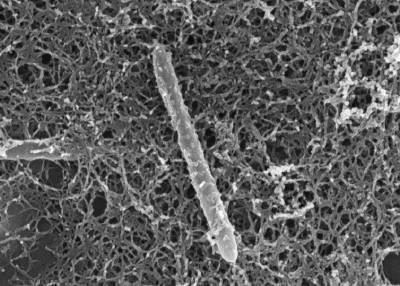
D. audaxviator is a Gram positive sulfate-reducing bacterium (making it the first complete such genome). The genome contains an unusual transposon and possesses many sites of insertion. Its complete intolerance of oxygen suggests long-term isolation. The hydrocarbons in that environment do not come from living organisms. The source of the hydrogen needed for their respiration comes from the decomposition of water by radioactive decay of uranium, thorium, and potassium. The radiation allows for the production of sulphur compounds that these bacteria can use as a high-energy source of food.
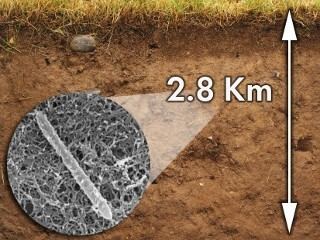
D. audaxviator not only survives a complete absence of organic compounds, light, and oxygen, but also temperatures as high as 60 °C (140 °F) and a pH of 9.3. The physiology that enables it to live in these extreme conditions is a tribute to its unusually large genome, consisting of 2157 genes instead of the 1500 of its peers. If conditions become unfavorable for normal life, D. audaxviator is able to encyst, safeguarding its DNA from heat, extreme pH, and the lack of water.
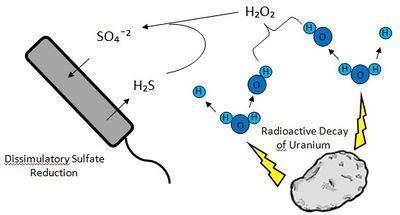
The name comes from a quotation from Jules Verne's novel Journey to the Center of the Earth. The hero, Professor Lidenbrock, finds a secret inscription in Latin that reads: Descende, audax viator, et terrestre centrum attinges (Descend, bold traveller, and you will attain the center of the Earth).

